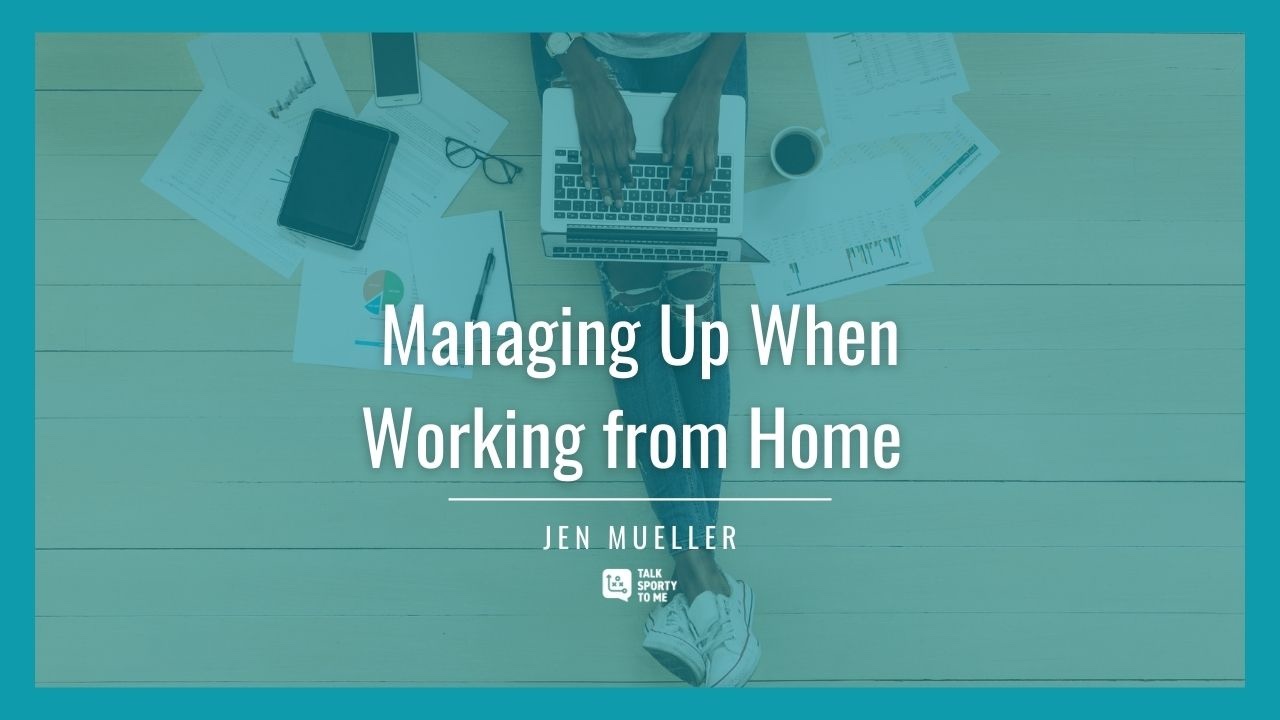Managing Up When Working From Home

The freedom and options that come from working from home highlight the benefits of the current business environment.
The downside? There’s less contact, connection and interaction with managers and that can make it difficult to clear up misunderstands and maintain positive relationships.
For example, you can’t walk past their office to see if it’s good time to talk, and there are no organic social interactions in a hallway or elevator that might smooth over what felt like a brusque email or exchange. Plus, a lack of physical cues makes it harder, if not impossible, to gauge reactions and read the room.
Managing up requires different skills in a work from home environment.
Building, maintaining and growing those relationships comes down to clear, concise communication. These five conversation strategies will help.
5 Communication Skills for Managing Up While Working from Home
Distinguish information from “bad news.” Resist characterizing something as “bad news” when what you really have is information. Information is information. It’s not good or bad. Reframing the message keeps the conversation in perspective. You’re less likely to avoid broaching the subject with your manager and more likely to be proactive and get ahead potential challenges that could arise because of the new information.
Rephrase “Can we talk?” or “Do you have a few minutes to talk?” You probably don’t like getting those types of messages and neither does anyone else. Forget about the worst-case scenario assumptions that come with it (i.e. assuming there’s a problem or an issue) the bigger issue is the ambiguity that stands in the way of your manager agreeing to your request in the timeframe you hoped. Be up front and specific. For example, “I’d like to talk through two questions I have about the new product launch. Do you have 10 minutes to talk?” This approach makes it easy for your manager to give an answer and to change the parameters if necessary. She could respond with, “I’m on calls all afternoon, but if you send an email with your questions I’ll give you the best answers I can today and we can talk tomorrow.”
Do what you say you’re going to do. If you ask for 10 minutes, keep the conversation to 10 minutes. If you have three questions only ask three questions. An overlooked part of effective communication is doing what you say you’re doing to do. It builds trust and rapport that goes a long way toward ensuring when you ask for 10 minutes in the future you actually get the 10 minutes you need.
Tighten your email copy. I write like I talk, unless it’s in an email. My emails are short, to the point and often feel curt compared to the warmth I try to bring to my conversations, but I know emails and written forms of business communication should be concise. It’s similar to the way I write for TV broadcasts where we’re constantly emphasizing tight copy. It might take you a few extra minutes to compose the email, but that’s time well spent if you’re able to get an answer faster or solve your problem quicker.
Ask Yes/No questions. I’m sure I’m not the only one who’s ended an email with, “What do you think?” or “Let me know what you think.” And when I stop to think about it, I rarely get a response to that because it’s too vague and open-ended. Even if there is an obvious response it takes more time and more thought to answer than a simple Yes/No question.
Do you want me to cancel the trip?
Do you want me to set up the interview?
Do you agree with the proposed next steps?
Not only is a one-word answer easier to type, but a thoughtful yes/no question will get you the answer you really need. And if your manager doesn’t agree or accept the premise of the question he or she will redirect the conversation and give you more specific feedback that you can actually use in determining next steps.
Good communication is always important, but clear and concise interaction are even more necessary in work from home environments where physical distance can add a layer of uncertainty and confusion into what we’re saying.
Be thoughtful and intentional in your messaging and conversations. The extra few minutes you spend strategizing those interactions is what leads to effective communication.
One way to improve your communication skills is by Asking Better Questions. Using Yes/No questions to get actionable feedback is just one of the techniques you’ll learn in the on-demand video series. It’s a practical, bite-sized series that will change the way you have a conversation and build relationships. Purchase access to the series here.


